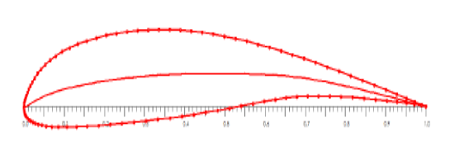


Indian Journal of Science and Technology
Year: 2021, Volume: 14, Issue: 29, Pages: 2427-2438
Original Article
Minendra L Surve1, Sanket S Unde1, Kailasnath B Sutar1*, Priyanka Dhurpate1, Dnyaneshwar G Kumbhar1
1Department of Mechanical Engineering, Bharati Vidyapeeth (Deemed to be University), College of Engineering, Pune-Satara Road, Katraj, Pune, 411043, India
*Corresponding Author
Email: [email protected]
Received Date:12 May 2021, Accepted Date:02 August 2021, Published Date:07 September 2021
Objectives: To design a blade profile suitable for a micro-capacity wind turbines. To analyze the performance of a new blade profile in terms of lift to drag ratio using simulation software such as QBlade and ANSYS Fluent CFD. Methods: A new airfoil for a micro capacity horizontal axis wind turbine is designed using QBlade software. A 3D model of the airfoil is prepared using CATIA. 2D and 3D CFD simulations of this airfoil are carried out using ANSYS Fluent and the simulation results are compared with those obtained from QBlade. Findings: It is found that QBlade results for the lift to drag ratio fairly match with the experimental results at all values of angles of attack (0◦ to 20◦). 3D CFD results also fairly match with experimental results at lower values of angles of attack (0◦ to 3◦). The optimum value of lift to drag ratio is obtained for the angle of attack of 3◦-4◦. 3D CFD simulation under predicts lift to drag ratio at higher angles of attack as compared to the experimental values. Novelty: The study reports simulation results for an airfoil blade profile of a micro-capacity wind turbine using both QBlade and ANSYS Fluent CFD (both 2D and 3D). The simulation results fairly match with the available experimental results.
Keywords: airfoil; microcapacity; wind turbine; lift to drag ratio; angle of attack; CFD
© 2021 Surve et al. This is an open-access article distributed under the terms of the Creative Commons Attribution License, which permits unrestricted use, distribution, and reproduction in any medium, provided the original author and source are credited. Published By Indian Society for Education and Environment (iSee)
Subscribe now for latest articles and news.